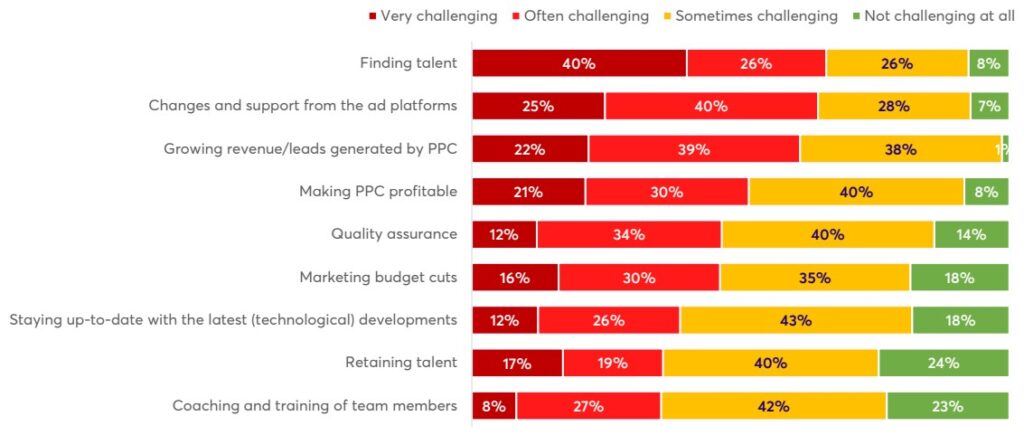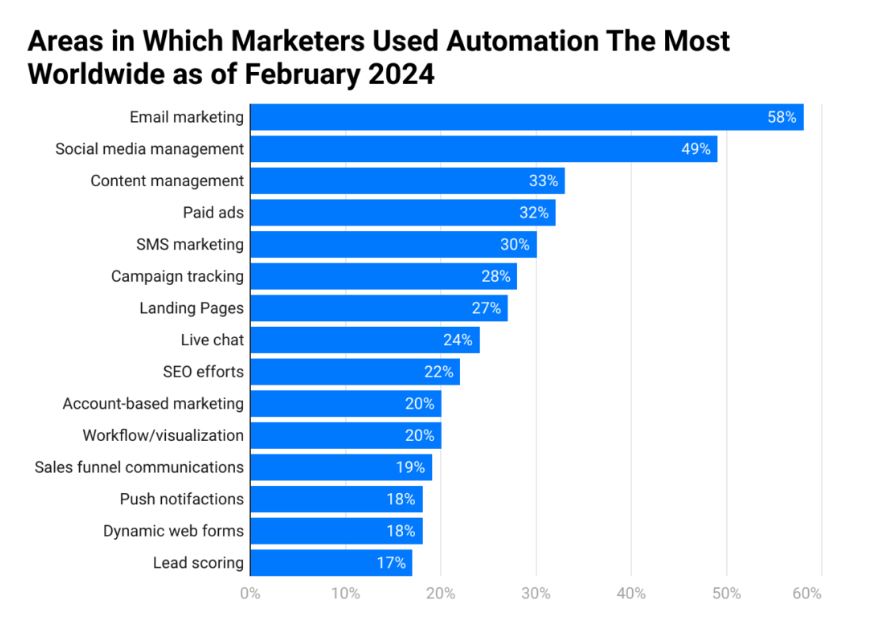Maximizing ROI with Smart Bidding: A Guide for PPC Marketers

If you’re looking for ways of maximizing ROI with smart bidding, you’re in the right place. Working with PPC professionals and agencies, I am all too familiar with the constant struggle of making ad campaigns profitable, especially with a shrinking ad budget.
Over 50% of marketers report that making PPC profitable is a significant challenge, while nearly 70% also struggle to grow revenue through paid ads. It’s clear that manual optimization no longer suffices.

Image via PPCsurvey
In this post, I’ll share a practical guide for maximizing ROI with smart bidding. You’ll know how to implement it, where it delivers the most value, and what to avoid.
What Is Smart Bidding and Why Use It?
Smart Bidding is Google Ads’ way of automatically adjusting your bids using machine learning and artificial intelligence. It uses data signals, including your device, location, time of day, and user behavior, to adjust bids in real-time.
So, why use it?
For starters, Google Ads dominates the online advertising space with a 78.56% market share. With paid ads being one of the most automated areas in marketing today, why not take advantage of the same efficiencies?

Image via Electro IQ
Smart bidding learns which clicks are likely to convert and bids based on their potential value. You spend less time guessing and more time driving real results.
How to Implement Smart Bidding for Maximum ROI
Maximizing ROI with smart bidding involves using a structured setup and strategic thinking. Here’s how I approach it:
1. Define Clear Goals
Before using smart bidding, it is essential to be clear about what success looks like. Are you trying to drive leads or boost sign-ups? Your goals should align with specific KPIs, like CPA, ROAS, or overall conversion volume.
2. Set Up Conversion Tracking Properly
It’s essential to utilize accurate conversion tracking when optimizing ROI with smart bidding. If Google Ads can’t see which clicks turn into results, it can’t optimize your bids effectively.
Set up standard or custom conversion actions and ensure they track accurately across devices and browsers. Small UX elements, such as onboarding tooltips, can also guide users toward high-value actions.
For example, a purchase is usually more valuable than a form fill. You can also use tools like Google Tag Assistant and Google Ads’ diagnostics features to double-check that everything is tracking properly.
3. Choose the Right Strategy
Each smart bidding strategy is specifically designed to achieve a particular outcome.
- Maximize Conversions: Gets the most conversions within your ad budget.
- Conversion Value Optimization: Drives the highest revenue within your budget.
- Target CPA (Cost Per Acquisition): Delivers conversions at or below your target cost per acquisition.
- ROAS Bidding (Return on Ad Spend): Optimizes bids to achieve a specific return on your ad investment.
When maximizing ROI with smart bidding, review your performance data and business objectives to ensure alignment. Then, select the strategy that best aligns with your campaign goals.
4. Use Broad Match Keywords
When paired with smart bidding, broad match keywords can unlock more reach. Google’s algorithm uses contextual signals to match your ads to relevant searches, even when the phrasing doesn’t exactly match your keywords.
For example, if you use the keyword “explainer videos”, broad match might show your ad to people searching for things like “how to explain my product with video.” Ensure to check your search terms report often, so you can remove any unrelated searches.
5. Segment Campaigns for Precision
Campaign segmentation allows you to tailor bidding strategies to specific audience types, product categories, or funnel stages. You can choose between:
- Affinity segments
- Custom segments
- Detailed demographics
- Life events
- In-market segments
- Your data segments
- Google-engaged audiences
The audience segments give smart bidding everything it needs to maximize ROI. Here’s a summary of which segment type is ideal where:

Image via Google Ads
6. Allow Time for Learning
Maximizing ROI with smart bidding takes time. It requires time to gather enough data and refine its performance. Most smart bidding strategies go through a learning phase that typically lasts 7-14 days, depending on your conversion volume.
During this time, avoid changing your ad budgets, bids, or targeting, as it can reset the learning period. Trust the algorithm to adjust and stabilize over time based on your set goals.
7. Use Seasonality Adjustments
Seasonality adjustments inform Google that you expect a temporary increase in conversion rates. This way, the algorithm can bid more aggressively during that window, so you don’t miss out on valuable traffic during peak times.
For example, if you’re running a weekend flash sale, you can set a +50% conversion rate adjustment from Friday to Sunday to help smart bidding optimize in advance.
Use Cases for Smart Bidding
Maximizing ROI with smart bidding starts with pairing the right strategy with the right campaign goal. Here are some scenarios where smart bidding delivers real results:
Ecommerce
With products at different price points, ecommerce campaigns benefit greatly from smart bidding. Google’s algorithm can prioritize high-value customers and adjust bids in real-time to drive more profitable sales.
Lead Generation
Smart bidding is an effective way to capture quality leads sustainably. You’ll avoid wasting your budget on low-intent clicks and focus on users most likely to convert. Bidding on Google and LinkedIn for lead generation is quite different, and you must follow each platform’s specific bidding process to get better results.
Brand Awareness and Traffic Growth
With smart bidding strategies, you can maximize conversions and scale your reach. It’s a great fit for top-of-funnel campaigns where you want to grow exposure without constantly adjusting bids.
High-Volume Campaigns with Multiple Conversion Values
If your campaign tracks different conversion types, smart bidding helps prioritize the ones that matter most. Assigning values to each lets the system bid more intelligently and maximize your return.
Seasonal and Promotional Campaigns
For time-sensitive pushes, smart bidding with seasonality adjustments is a game-changer. Proper sales enablement training and practice can help achieve maximum results for this campaign.
Common Pitfalls to Avoid
Maximizing ROI with smart bidding isn’t foolproof. Here are some common mistakes I’ve seen marketers make:
- Switching strategies too frequently: Switching up your smart bidding strategy too often throws it off balance, resets the learning phase, and stalls your results.
- Insufficient conversion data: Smart bidding depends on solid historical conversion data. Without it, the algorithm can’t spot patterns or optimize bids.
- Setting unrealistic goals: If you set a $10 CPA when your average is $50, you’re setting smart bidding up to fail. It needs realistic, data-backed goals to perform efficiently.
- Overly restrictive budgets: If your daily budget’s too tight, smart bidding won’t have the room it needs to test and learn what actually works.
- Impatience: Smart bidding needs time to learn, and making changes too soon can prevent it from reaching its full potential.
Final Thoughts
Maximizing ROI with smart bidding doesn’t have to be challenging. Just follow the steps I’ve outlined.
But remember, it isn’t a set-it-and-forget-it affair. To achieve great results, stick with it and use accurate data to refine your approach.


